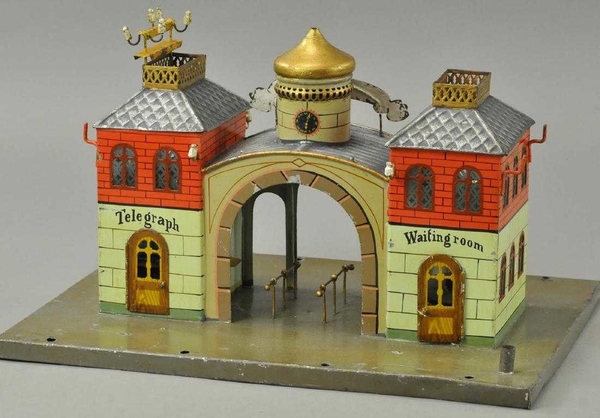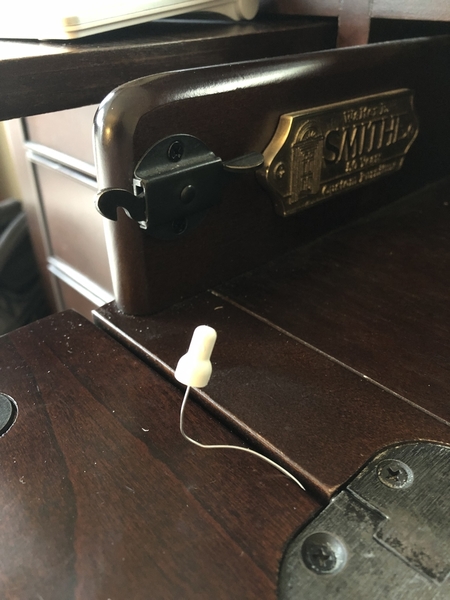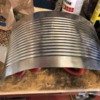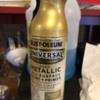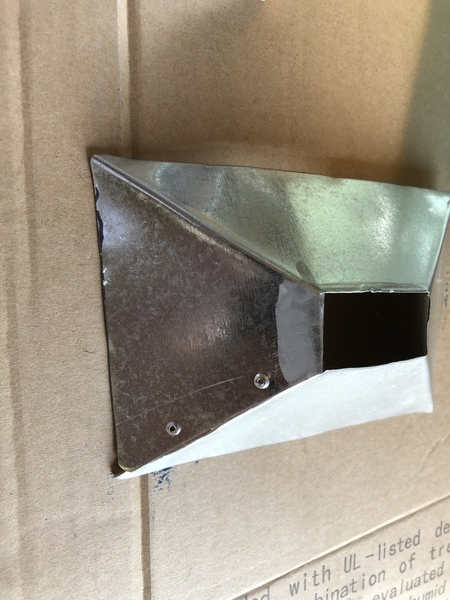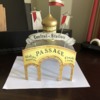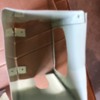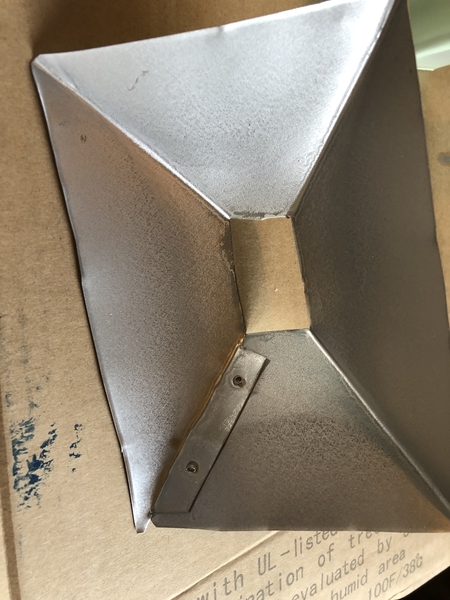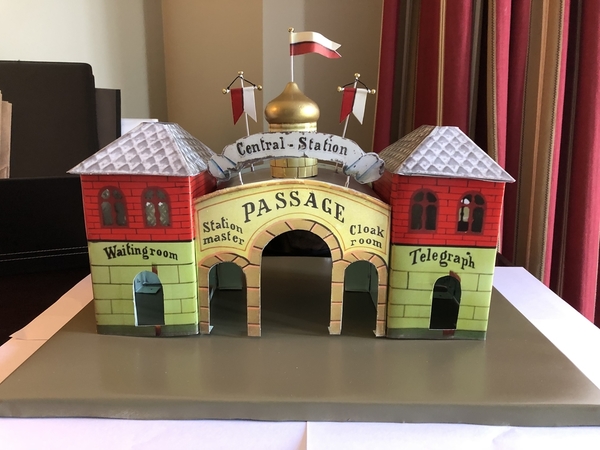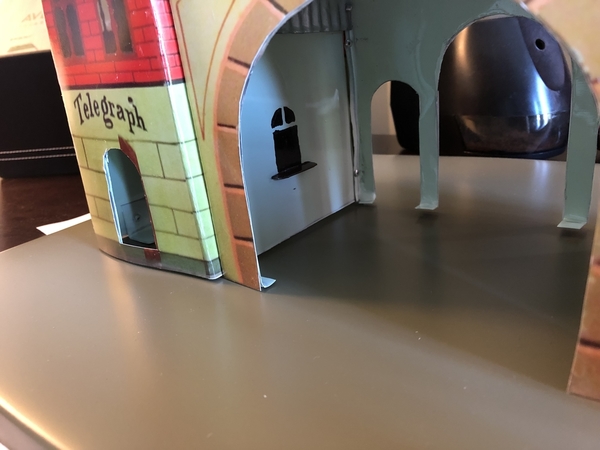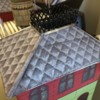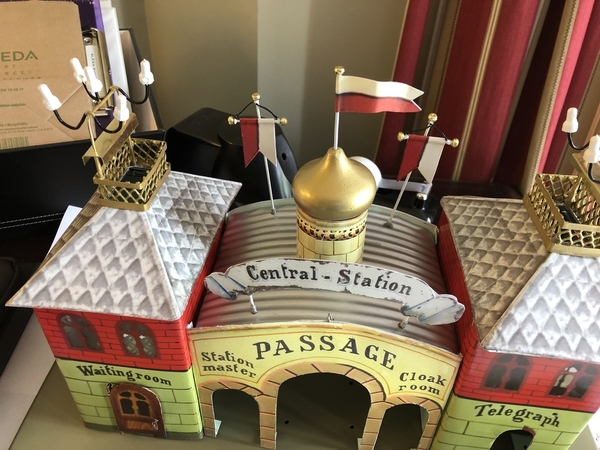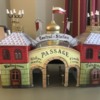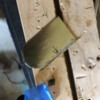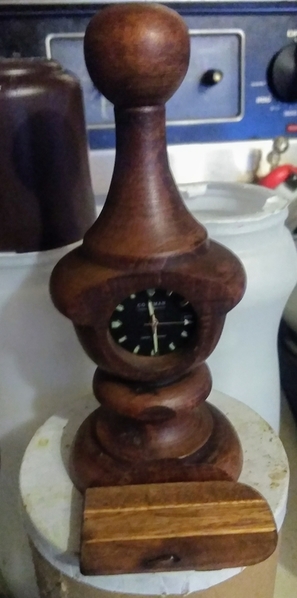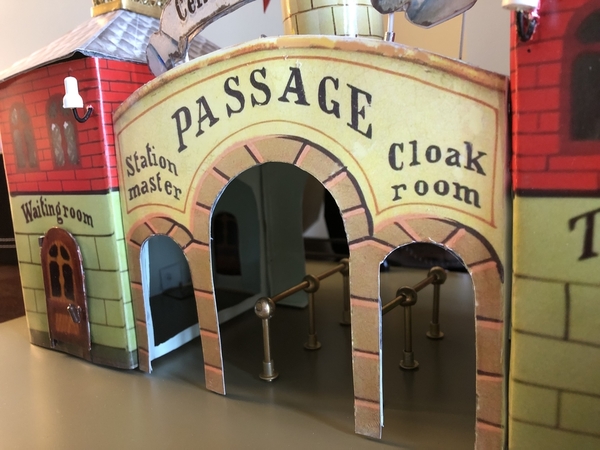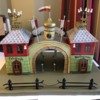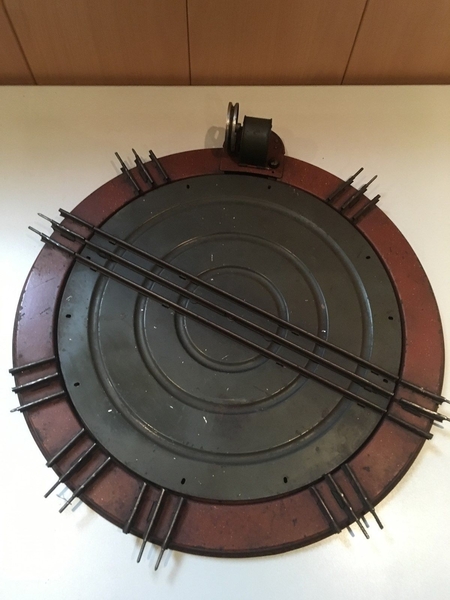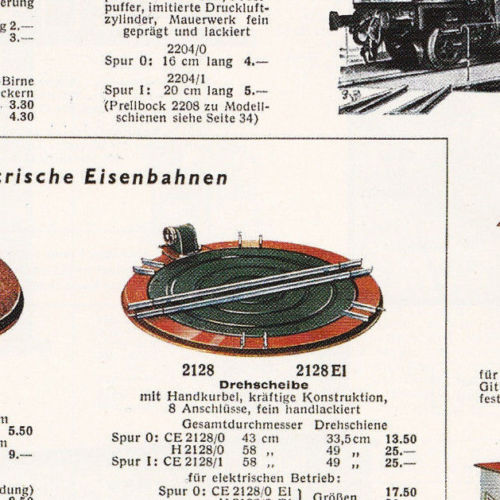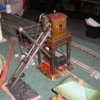I am working on a paper-plated tin replica of the Marklin Onion Dome station. Paper plating is something I have been using on tin in lieu of lithography or handpainting. I print the photos on high-quality photo paper, seal them and then glue them to a tin structure. The first step is creating the image files. This is easier if you can get straight on shots of the original piece. I was not so lucky in this case. I bought Photoshop to help me extrude and adjust photos to the right perspective. I then touched up flaws in the original, such as rusted areas or areas of paint loss. I then put the photos in a PowerPoint file where I have easier sizing and printing controls. I have completed most of the Photoshopping for this project.
The next step in the project is to print low-quality prints and create a mocked-up structure to make sure everything fits. I then use the mocked up model to trace onto the tin that will make up the base structure.
Here is a picture of the first mock-up attempt.
The clock tower is still a little tall and the roof does not fit quite right yet. One of the hardest parts so far was finding the Onion Dome itself. What I found was a polyurethane architectural finial in the perfect size. The firm had a minimum order quantity, so I bought seven of them!  Let me know if anyone wants any. They are $8 each plus shipping.
Let me know if anyone wants any. They are $8 each plus shipping.
One dilemma I have is what to do about the windows. There are twenty windows in the station. Each has a mullion. The original had cutouts with a frosted patterned glass behind them. This allowed the station to be illuminated. I don't think I can cut the tin that intricately. I may be able to cut the photo-paper and glue a piece of plastic sheet to the back of the photo paper into the tin opening. Then, should I attempt to hand paint the designs, or just use a frosted plastic?
The last item is the corrugated roof over the Passage. I am searching for a large corrugated tin can to cut for this purpose.
I'll post my progress here as I go.
George






